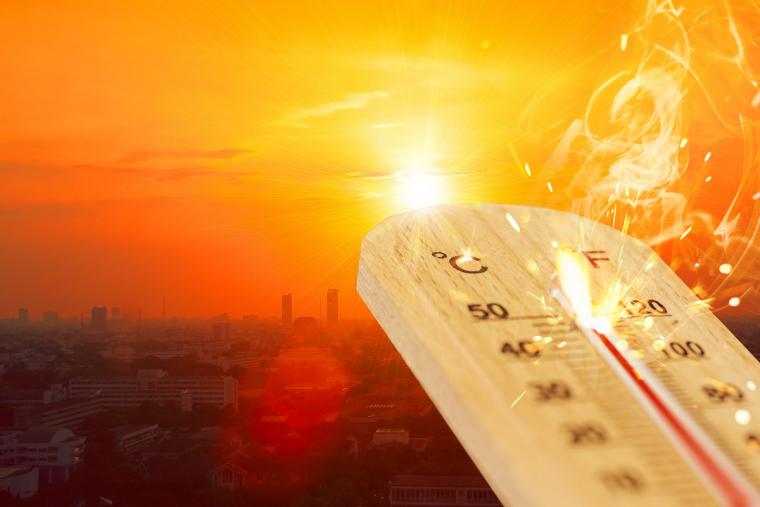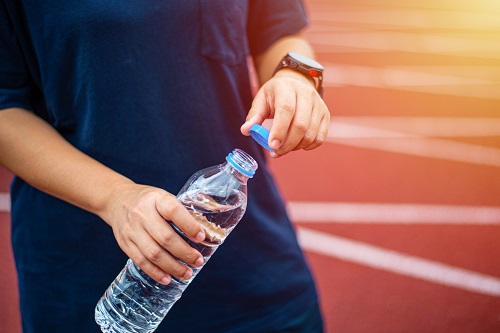
According to the National Oceanic and Atmospheric Administration, the nine years spanning 2013 through 2021 rank among the 10 warmest years on record, and we’re on our way to another scorcher.
Temperatures in Newark, N.J., hit triple digits at least five consecutive days in late July, and the Boston Triathlon was postponed from July 24 to Aug. 21 after the weather forecast predicted 97 degrees on race day. Meanwhile, New York City Triathlon officials cut race distances in half for the July 24 event, which was set to take place with heat indexes reaching more than 100 degrees.
Organizers of sports tournaments are making adjustments to combat the heat, too. In South Jordan, Utah, the starting time for the “In It to Win It” fastpitch girls’ softball tournament earlier this summer was pushed up to 8 a.m. “The heat hasn’t stopped us,” tournament organizer Jerry Cordova Ong told Fox 13 in Salt Lake City, adding that his staff was providing ice, water and frequent breaks during games to keep players, coaches and umpires hydrated. “It might slow us down a little bit. These are die-hard kids. They love to play.”
Indeed, the games (and practices and training sessions) apparently must go on, despite record-breaking heatwaves across the country this summer. Sadly, tragedy sometimes results. A wrestler from Dodge City, Kan., who recently graduated from high school and was expected to compete for North Dakota State University, died of an apparent heat stroke in July after running in a sweatsuit for training purposes; his body’s internal temperature rose to 107 degrees, according to reports.
While all athletes can suffer from the heat, football players are particularly susceptible to heat-related illness and death.
“According to the National Center for Catastrophic Sports Injury Research, during the most recent five-year period (2017-2021), football averaged 2.4 Exertional Heat Stroke (EHS) deaths per year, up from 1.4 per year during the previous five-year period (2012-2016). … Five of the 11 deaths occurred during conditioning sessions, and nine of the 11 deaths were linemen,” Karissa Niehoff, chief executive officer of the National Federation of State High School Associations, recently wrote in her weekly “NFHS Voice” column, noting that EHS is the leading cause of preventable death in high school sports.
 “Evidence suggests the prevalence of exertional heat stroke among high school athletes is largely due to young athletes’ not acclimatizing, or physically adjusting to the heat, particularly in the first few weeks of practice,” added Jessica R. Murfree, a visiting assistant professor of sport management and an Accountability, Climate, Equity, and Scholarship (ACES) Faculty Fellow at Texas A&M University, in a widely shared article that first appeared on TheConversation.com in mid-July. “Adults’ responsibility to keep children safe in sport settings becomes blurry as the growth in legal challenges related to heat illness demonstrates a disconnect between adults’ duty of care and athletes’ well-being. Negligence is a common claim associated with these lawsuits. Allegations of child endangerment or wrongful death can lead to civil or criminal legal disputes.”
“Evidence suggests the prevalence of exertional heat stroke among high school athletes is largely due to young athletes’ not acclimatizing, or physically adjusting to the heat, particularly in the first few weeks of practice,” added Jessica R. Murfree, a visiting assistant professor of sport management and an Accountability, Climate, Equity, and Scholarship (ACES) Faculty Fellow at Texas A&M University, in a widely shared article that first appeared on TheConversation.com in mid-July. “Adults’ responsibility to keep children safe in sport settings becomes blurry as the growth in legal challenges related to heat illness demonstrates a disconnect between adults’ duty of care and athletes’ well-being. Negligence is a common claim associated with these lawsuits. Allegations of child endangerment or wrongful death can lead to civil or criminal legal disputes.”
Murfree recommends modifying practice schedules, increasing the number of water breaks, revising athletic heat policies to reflect climate change, and implementing procedures to ensure compliance by coaches and athletic administrators.
Sports event organizers and administrators also should rigorously adhere to the remedial guidelines the Centers for Disease Control and Prevention suggest to treat heat stroke, which the CDC calls “the most serious heat-related illness. It occurs when the body can no longer control its temperature and is unable to cool down. Body temperature can reach 106 degrees or higher within 10 to 15 minutes, and heat stroke can cause permanent disability or death if the person does not receive emergency treatment.
Symptoms can include confusion, slurred speech, loss of consciousness, dry skin or profuse sweating, and seizures.
The following steps to treat heat stroke are taken directly from the CDC’s website:
• Call 911 for emergency medical care.
• Stay with the [individual] until emergency medical services arrive.
• Move the [individual] to a shaded, cool area and remove outer clothing.
• Cool the [individual] quickly … with a cold water or ice bath, if possible.
• Wet the skin.
• Place cold, wet cloths on the on the head, neck, armpits, and groin.
• Soak clothing with cool water.
• Circulate the air around the [individual] to speed cooling.
The NFHS also recently developed a “Heat Acclimatization and Heat Illness Prevention Position Statement.” The statement contains seven fundamentals of a heat acclimatization program — including a slow progression in activity duration and intensity; adjusting workouts as heat and humidity increase, including close monitoring and a prompt response to developing problems; proper hydration; and having an emergency action plan ready to go.
“With summer temperatures rising, we believe many youth sports leagues and school districts will need to aggressively update their practice rules and heat policies to keep their players safe,” Murfree wrote for TheConversation.com. “We suggest particular attention be paid to low-income, minority neighborhoods and regions that can get excessively hot.”

